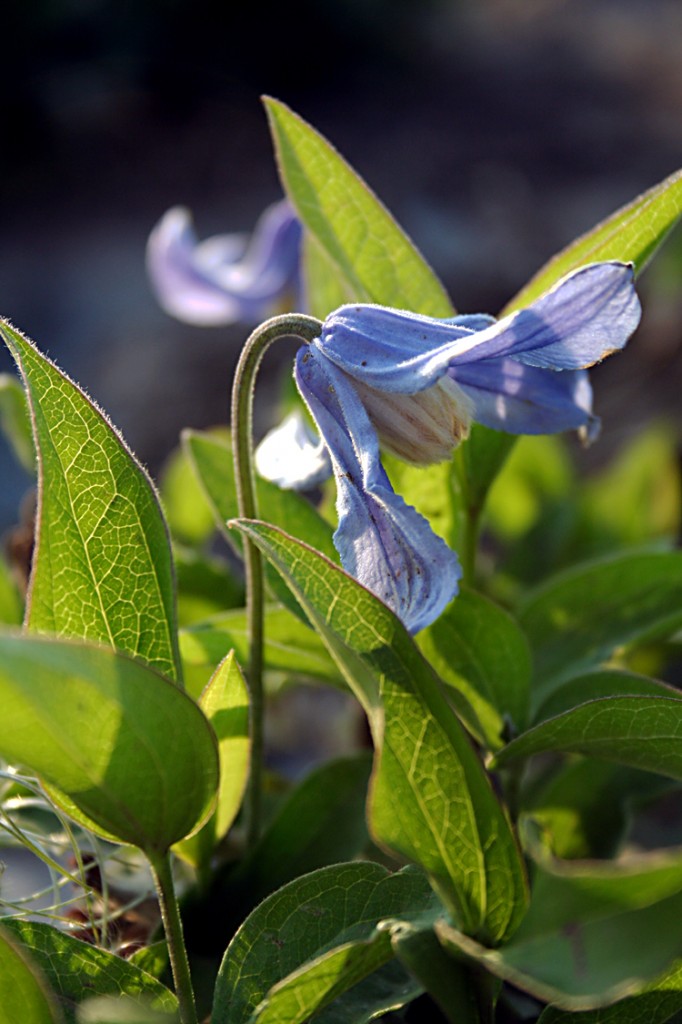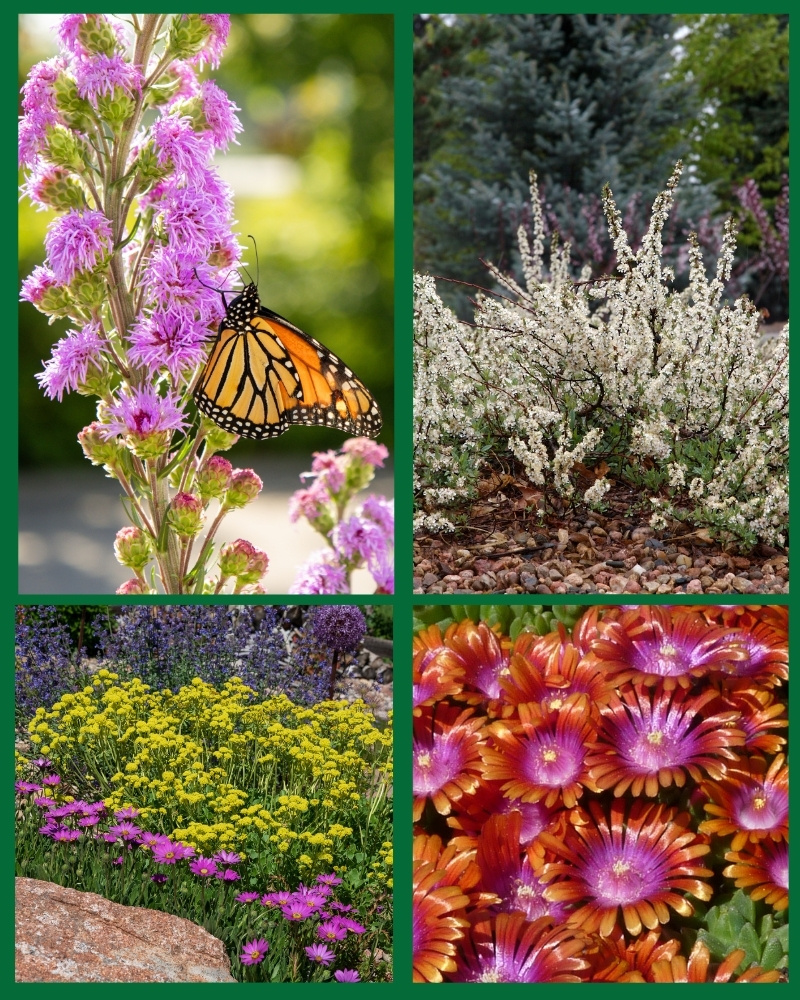Beautiful Bells for the Border: Mongolian Bells® Clematis

Most of us associate clematis with the spectacular climbers, like C. jackmannii, that drape and festoon fences and arbors for lucky gardeners much of the summer. More and more gardeners are discovering that there are a number of attractive clematis that behave more like herbaceous perennials, rising to form a graceful clump, gracing themselves with flowers and lovely seedheads later on, then dying down to the ground in the winter.
Clematis integrifolia is probably the best known of these, a handsome vase-shaped mound rising to a yard or more in rich soils. Sturdy supports are a necessary addition for the common forms of this clematis since they invariably splay and fall apart just as they approach their peak of bloom.
Harlan Hamernik, founder of Bluebird Nursery in Clarkson Nebraska, was collecting plants in Inner Mongolia in the 1990’s. He spied a much more compact form of this outstanding perennial, and brought back seed, which grew faster and had greater variability than any perennial style of clematis he’d observed.
This compact, almost ground-covering race of Clematis integrifolia blooms from spring to fall, with nodding, leathery four-parted flowers in blue, lavender, pink and pure white. It appears to have greater drought tolerance than typical clematis.
MONGOLIAN BELLS® thrives in a wide array of soils and exposures. It promises to become the classic perennial clematis for our region; don’t let your border or xeriscape be without it!
View the plant profile here. Or watch the video here.
MONGOLIAN BELLS® (Clematis integrifolia ‘PsHarlan’)
Perennial
Height: 10 – 14 inches
Width: 12 – 15 inches
Blooms: May to September
Sun: Full sun to partial shade
Soil Moisture: Moderate to dry
Hardiness: USDA zones 3-9 (up to 8150′ elevation)
Culture: Sandy loam or loam
Thanks to Panayoti Kelaidis, Denver Botanic Gardens, for writing this piece.



Are they deer resistant?
Yes it is AND you can also prune this plant down right after it blooms and it will flower again, just like a delphinium will do when you cut it back.
I just bought a plant called beautiful bells and it has yellow flowers. According to the website they’re blue pink or white. Do you know if they come in yellow. Maybe you can think of a yellow shrub similar. Thanks
There is a larger bush clematis on the market named Mongolian Gold- Clematis fruticosa and Bluebird Nursery in NE sells it. It was a Plant Select contestant several years ago and is a FANTASTIC plant! Fragrant flowers, glossy green leaves, never needs water once established, no disease or weird die back habits- great long lived full sun plant for those who appreciate the deeper intrinsic plant values within a landscape or garden. It was not promoted by Plant Select, due to the fact that it has smaller flowers that face downward which disguises the “WOW” value in this plant. Plant collectors/avid gardeners will love it and it should be used more often.
How would this plant do under the canopy of a 30’ honey locust? And do the bunnies like it?
It would do very well under that tree and bunnies don’t like to eat it.
I love my single flower so much, I could not bear to cut it back after bloom..whats the best that could happen? I get 2 all year? This one keeps me mystified. Each single flower prettier than previous year, better curtains that open, just a peek! Wow.
I love this plant; purchased it so very tiny at a sale at the Denver Botanic Gardens! I find that mine takes the hot sun and also likes shaded roots. Now that it’s late July, it has gotten floppy … is it too late to cut it back for additional blooming this season?
Great purchase! Unfortunately, it is too late to manipulate it into additional blooming. To make that happen, cut it back before it finishes blooming, preferably 5 blooms before it finishes. It is hard to cut back when blooms are still coming on, but that is what will bring about more blooms. Try it next year!
Well I was glad to see my post from 2 years ago and glad to say, after my ..NOT cutting experiment, I actually did have more than one and they are both at 16″ . They are in a climbing semi torture chamber I suppose for this species as they are not known as climbers…but both are brilliant and beautiful bells, and the yellow bombus native to pacific northwest really like visiting both of them.
Here are the pictures of my 16 ” bells.
They were difficult to take, as they are on a 4 foot rock wall with rock garden in forefront and another flower border behind(they have grown through) I don’t like stepping or interfering too much.
They were difficult to take, as they are on a 4 foot rock wall with rock garden in forefront and another flower border behind(they have grown through) I don’t like stepping or interfering too much.
Reply